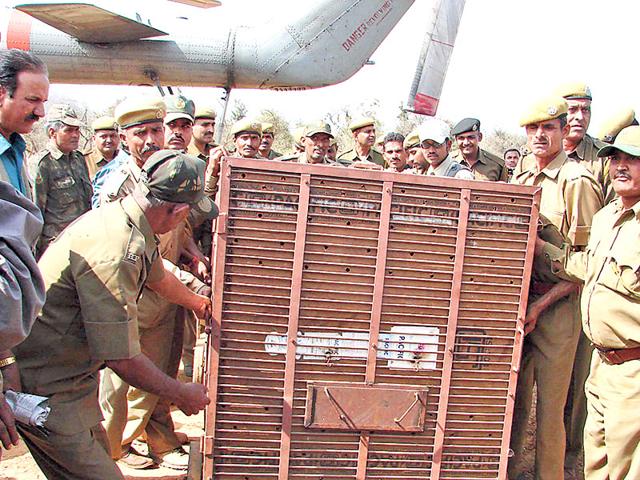‘Tourism lobby doesn’t want Sariska to do roaring business’
A powerful lobby of tourism industry in Rajasthan doesn’t want the Sariska reserve to get tigers from the Ranthambore National Park as it fears Sariska might snatch away its business due proximity to Delhi, according to a book by a former Sariska field director
A powerful lobby of tourism industry in Rajasthan doesn’t want the Sariska reserve to get tigers from the Ranthambore National Park as it fears Sariska might snatch away its business due proximity to Delhi, according to a book by a former Sariska field director.

Sariska, which falls in the Alwar district of Rajasthan, had lost all tigers in 2004.
The lobby feels that Sariska can attract a huge chunk of international and domestic tourists as it is just 240 kilometres from Delhi if it is revived as a tiger safari destination, the book says.
Ranthambore is 360 kilometres from the national capital but it presently monopolises the tourism business as Sariska is now a weak destination for want tigers.
Former field director of Sariska Sunayan Sharma has made this stunning revelation in his book ‘Sariska - The Tiger Reserve Roars Again’.
The 224- page book focuses on the past, present and the future of Sariska and the challenges it still faces. He says the relocation of tigers was opposed on various pleas, including there was no precedence of tiger relocation, tigers might not survive in the new location and there might be problem of breeding among tigers at Sariska.
The opposition from this lobby not only delayed the relocation project but has also scuttled the Phase 2 of the project midway. As per the proposal, five tigers were to be relocated in each phase and there could be four to five such phases.
But only eight tigers have been relocated since June 2008, the last relocation being in August 2013.
The book reveals that the pressure from this lobby was so strong that even the Prime Minister’s Office was influenced at one point of time. The tiger relocation plan was conceived in 2006 on the recommendations of a Central empowered committee but it was scuttled by the lobby till 2008.
“The proposal (tiger relocation) was vehemently opposed by a powerful lobby which did not want Sariska to recover lest it takes away a large share of the tiger tourism from Ranthambhore because of Sariska’s ideal location vis-à-vis that of Ranthambhore” says Sharma in the book.
There were demonstrations against the project by hoteliers, transporters and the guides in Sawai Madhopur where the RNP is located.
As per industry sources, Ranthambhore records business worth R8 crore per day during the peak tourism season and this “lobby” does not want tourists to steer towards Sariska.
The claims made in the book were corroborated by HT through independent sources who agreed that there is still some resistant to the relocation project.
However, owing to the persistent efforts of the state Steering Committee of Forestry and Wildlife Management that the first tiger was shifted to Sariska from Ranthambhore on June 28, 2008.
Sharma feels notwithstanding the opposition, the relocation of tigers to Sariska is in the interest of the RNP and the reserve.
There is overpopulation of tigers in the national park due to which the big cats are straying out of the jungle and “the simplest solution lies in regularly sending tigers from Ranthambhore to Sariska”.
Politics over Sariska land
The book also reveals another interesting and hitherto unknown fact. When Sariska was declared tiger-less, a former Union minister, whose son is a BJP MLA now, had suggested in a public meeting at Sariska that “the land of the reserve should be distributed to villagers for farming as Sariska, after losing its tigers, has no value.” “It is shameful but it had happened and still a group of politicians want mining to be allowed inside the reserve area,” Sharma told HT.
Milk cake trade
Sharma claims famous milk cake industry of Alwar is largely responsible for biotic pressure on the reserve. Villagers living inside the reserve make a living by selling milk and use firewood for producing milk cake as such they do not want to leave the reserve. Villagers also demanded the entry of commercial vehicles into the reserve for transporting milk.





